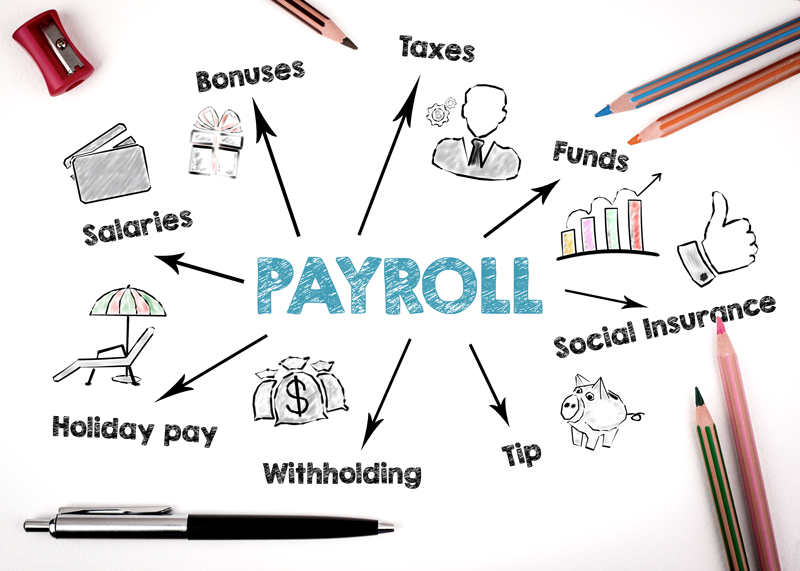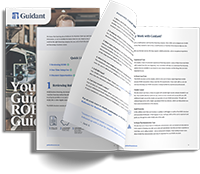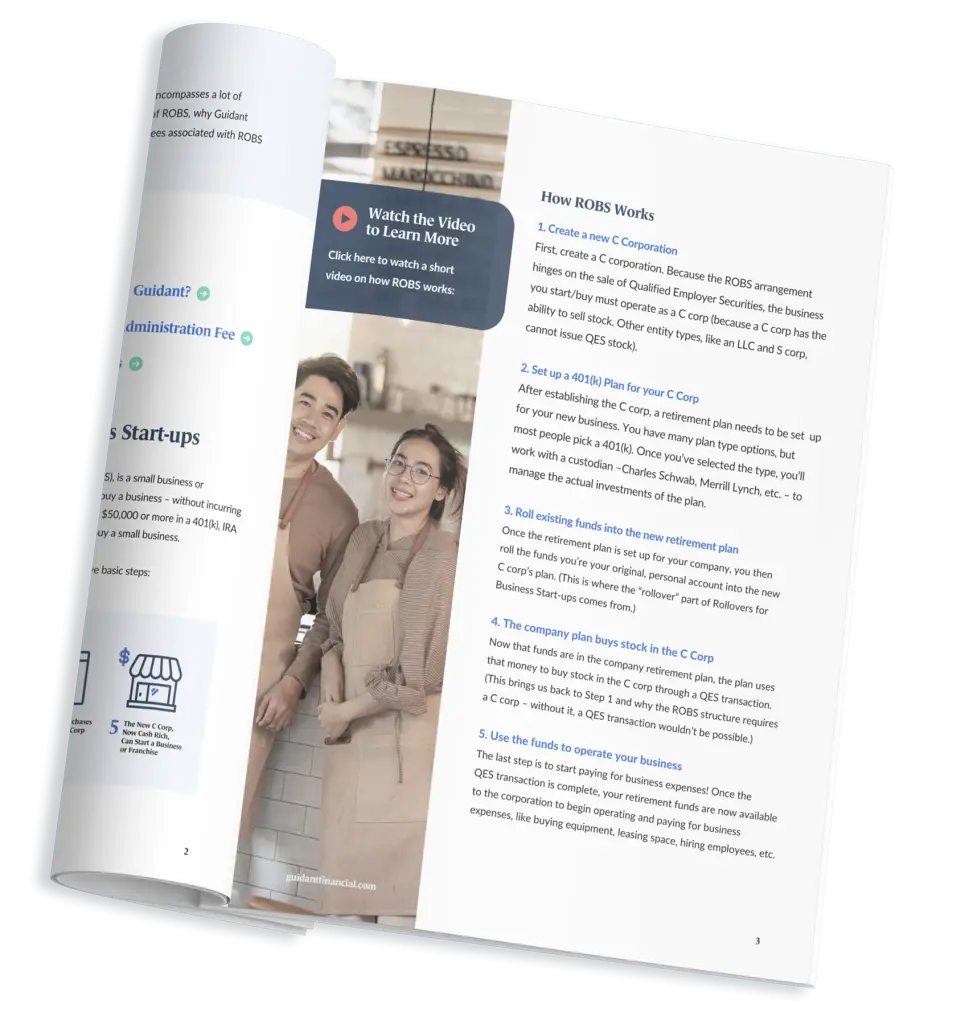You can’t run away from payroll as a small business owner. Whether paying employees or yourself, you’ll want to follow the best payroll practices to avoid headaches and fines. But you also want payroll to be quick and easy.
Following some of the best payroll practices can help you spend less time doing paperwork — and more time doing what you love in your business. In fact, small business owners spend an average of five hours each pay period calculating, filing, and remitting payroll taxes. Getting your payroll process right is crucial to saving time, and making your life much easier as a business owner.
Failure to have some of these best payroll practices in place can lead to payroll errors, which can lead to taxes to the state, government fines, and even prison terms. The good news? You can avoid payroll errors and save time each pay period by following these five best payroll practices!
5 Best Payroll Practices

1. Know Your Payroll System
Many business owners choose to outsource their payroll, which is a smart move. Third-party payroll service providers can help streamline the whole process, take care of payroll obligations, and put your business less at risk for payroll errors. But even if you outsource payroll, you’ll still want to pay attention to your payroll system.
You should have a working knowledge of your payroll system, according to payroll experts. And understanding your payroll system is the first step to following best payroll practices!
For example, you’ll want to know how your employees are classified. How many are classified as salaried employees? As independent contractors? As temporary, exempt, or non-exempt employees? Are workers classified as part-time or full-time employees?
You might know your employees, but do you know if your payroll system has your employees accurately filed? About one-third of businesses don’t classify their employees correctly. And there are significant differences in tax reporting requirements.
There can also be differences in state labor laws on the frequency of pay and reporting. So, you’ll also want to know how hours are collected if employees report with an hourly wage — and the levels of employee wages.
To understand the basics of your payroll operations, you’ll want to make sure you know the answers to these questions:
- How are your employees classified and paid?
- How often are paychecks issued?
- When are tax filing deadlines?
- What are state and Federal laws on the maximum number of hours?
- Who enters or reviews the data? Who maintains it? Who verifies it? Who has the authority of final sign-off?
2. Keep It Simple: Simplify Your Payroll Process

Your time is valuable. And you don’t want to spend a lot of it doing paperwork. That’s why it’s best practice to keep your payroll system as simple and effective as possible.
For example, if you’re issuing biweekly paychecks to some employees and monthly paychecks to others, your payroll system is likely inefficient because processing multiple types of paychecks can take twice as long. To streamline the process, you’ll want to use one issuance system.
As you review your payroll system, ask yourself where processes can be simplified. And be aware that states may have laws on how often checks must be issued for particular categories of employees.
3. Evaluate Your Payroll System and Automate
Once you understand your payroll system, you can evaluate your payroll department and process. You’ll want to ensure your payroll operates efficiently. But how do you know if your current process is efficient or not?
For one, your payroll should be issuing paychecks on time. Your system should also follow all applicable laws and regulations regarding withholdings for payroll taxes, Social Security, Medicare, unemployment insurance, and other Federal and state requirements. Make sure your payroll also complies with matters such as tax reporting on time, as noncompliance can trigger fines.
To improve the efficiency of your payroll, you’ll also want to consider the practicality of the process. For example, if your employees are manually recording time or bookkeepers are manually preparing payroll, your system is prone to human error. That means your payroll might be slower and less reliable.
Luckily, payroll can easily be automated! Through third-party payroll service providers or payroll software, your payroll can be managed for you. You can also set up employee dashboards online to track your employee’s time logs, tax forms, address information, and more.
By automating all or most of your systems, you’ll avoid manual payroll mistakes and make the whole process smoother. This will depend on your company’s size, including your payroll staff and whether you have payroll management. But if your business is on the larger side, at least one person should review the data other than the person who maintains and administers the system.
Make sure you take the time to troubleshoot any errors — and document payroll issues, too, so you or your payroll team knows how to fix them if they crop up again!
Ready to streamline your business, avoid common payroll errors, and save valuable time? Here’s How to Streamline your Business and Save Time with Payroll Services.
4. Create a Payroll Policies Guide and Human Resources Handbook

Once you’ve run through your system a few times and feel confident in your system, you’ll want to create a policies and procedures guide for your payroll. This guide will give new hires and existing employees a handy reference point for what to do, when, and why. (And it serves as good documentation for you and your business, too!)
The policies and procedures guide can also include a calendar of important dates, forms, and a payroll flow chart for human resources and payroll employees. Documenting your payroll and providing resources for your employees is one of the best payroll practices you can do!
It’s also a good idea to create a human resources or employee handbook. Why? Human resources (HR) and payroll functions often overlap. Employee pay, payment schedules, proper tax records and withholding, employee benefits, retirement plans, and healthcare all affect both HR and payroll.
So, having a human resources handbook along with your payroll guide can help you — and your employees — keep track of all payroll information, including paycheck issuance calendars, tax withholding forms, direct deposit forms, retirement and health care plans, and more.
5. Use an Online Payroll System

Remember: You don’t have to do payroll alone. And the more you automate the payroll process, the more protected your business is from payroll errors (and the fines that come with them!).
There are a lot of available software and payroll service providers available for small business owners. It’s important to review available payroll providers to ensure their capabilities match your needs.
One of the newest trends in payroll software is Human Capital Management (HCM), which manages payroll and HR functions. Based on your payroll system, determine whether your business is better off with payroll-only software — or if HCM software to integrate functions would be the better bet.
In general, your payroll system should be able to:
- Keep track of payroll records, dates, and deadlines.
- Provide payroll reports and payroll tasks.
- Set notifications and reminders.
- Handle employees from the point of hire to the day they retire (and beyond if you handle retirement plan administration!)
- Accessible and utilized anywhere across multiple devices at the office or remotely.
Many small business owners choose to outsource through a third-party service provider to save on time and payroll costs. Sometimes it’s better to leave payroll to the payroll professionals, so you can focus more on your business.
Whether you choose to manage payroll through software or outsource payroll, following these best payroll practices will make your life easier in the long run as your business grows!
Is outsourcing payroll right for your business? See 6 Reasons Your Small Business Can Benefit From Payroll Services.
Guidant Payroll Services for Small Businesses
Some payroll service providers might not make sense for you if you’re a small business owner. Bigger service providers, for example, may not offer the level of one-on-one support you need — especially at an affordable price. But payroll doesn’t have to be complicated or expensive. Guidant’s Payroll Services helps small businesses streamline and simplify the whole payroll process!
Our payroll services are tailored to small businesses, with several payroll plans available. Call us at 888-472-4455 today to speak with a financial expert to determine the best payroll plan for you!

















